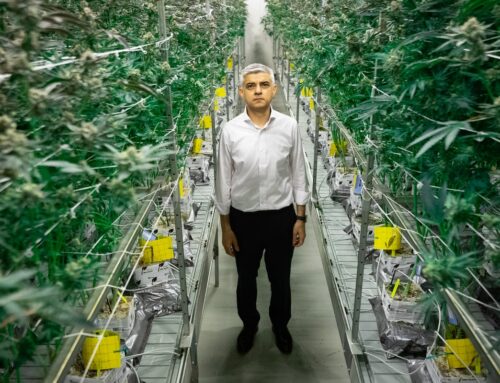The Real Reason Tesla’s Stock Exploded In 2020
January 31, 2021
Tesla’s been the hottest stock on the market over the last year, but most people have overlooked what we think is the most important reason for their success.
It’s the reason their shares soared 695% during 2020 and they landed on the main stage with their inclusion in the S&P 500.
Now, Tesla’s delivered a blueprint for how to thrive in the post-pandemic world.
While major automakers have been spinning their wheels fighting to survive after a gut-wrenching year…
Tesla’s moves have Morgan Stanley analysts putting them in a completely separate camp, comparing them to services companies like Roku, Tinder, Apple, and even video game makers.
And after turning their focus to building more valuable assets around the cars everyone’s pining after…
Their market cap now stands at more than 5x the value of GM, Ford, and Fiat Chrysler combined.
This is why Business Insider says, “Tesla’s services could be worth more than its car business.”
This revenue-driving strategy is a huge part of why many are comparing Elon Musk to Apple’s legendary founder, Steve Jobs.
And now, one small Canadian company is following the same “sum of all parts” strategy aimed at achieving great results.
Facedrive (TSXV:FD,OTC:FDVRF) is a ridesharing company that gives customers a choice between grabbing a ride in eco-friendly electric vehicles or in standard vehicles…
And they’ve seen incredible growth over the last year adding major assets and verticals to the company.
That creative problem-solving has helped them ink important deals with government agencies, A-list celebrities, and even Big Tech juggernauts.
They’ve already seen 700%+ gains over the last year.
By using this same “sum of the parts” strategy employed by Tesla, they could soon become a household name and take their brands internationally in 2021.
More and More Revenue Streams
Anyone betting against Tesla at this point hasn’t been paying attention over the last year.
In fact, those who bet against them in 2020 lost a total of $38 billion in all.
That’s because not only has Tesla been riding the electric vehicle boom that’s taken over the auto industry…
They’ve also gone beyond that to add services and recurring revenue to their model.
With this, they’re not just selling a car and banking on one sale every 5 to 10 years.
They plan on driving massive amounts of revenue each month from their various services provided to their customers.
Among them, they’ve been building services out for their upcoming autopilot software, car insurance division, and the long-awaited Tesla network – providing access to charging stations around the nation.
They’re not alone though.
Apple has been following a similar path, becoming far more than just a computer company in recent years.
With their release of the Apple One bundle, they now provide streaming music, TV shows, and movies, news, and arcade games.
By 2025, Apple services are expected to top $50 billion in revenue, even outearning the iPhone at that point.
Facedrive (TSXV:FD,OTC:FDVRF) has been making moves of their own throughout the last year.
While the ridesharing industry took a hit amidst global lockdowns, they didn’t let that slow down their growth curve.
They’ve acquired several food delivery businesses that helped them add hundreds of thousands of restaurants to their network and countless new customers.
They acquired Foodora Canada, which was previously a subsidiary company of the $20-billion multinational food delivery service, Delivery Hero, operating in 40 countries and servicing more than 500,000 restaurants.
Then just a few months later, they acquired Food HWY, a leading “ethnic and student-focused” food delivery service.
But Facebook was looking to Tesla’s “sum of all parts” strategy, which wasn’t confined to just adding services in their own industry…
Thinking Outside The Industry Box
Over the last several decades, major automakers have mainly been seen as one-trick ponies.
They may come out with some new bells and whistles every few years, but by and large, we’ve all come to know Ford and GM as fairly predictable car companies.
Tesla, on the other hand, has gone out of its way to not become boxed in like the others.
With a bigger vision of bringing green initiatives to their customers in any way possible, they’ve also branched out to produce home energy products.
In April 2015, they introduced a line of home batteries, called the Powerwall, that serve as energy storage systems in homes or businesses.
These connect to your solar energy system at home, allowing you to store up power and use it for backup in case of emergencies.
Apple’s followed suit, stepping outside the computer hardware industry that made them a household name.
They’ve also branched out into health with the development of the Apple Watch.
And after selling more than 31 million watches in 2019, not only did they dominate the wearables market…
But they also sold more watches than the entire Swiss watch industry.
This plan of providing a bigger vision for their customers is clearly near and dear to the Apple model…
Because Tim Cook says, “If you zoom out into the future, and you look back, and you ask the question, ‘What was Apple’s greatest contribution to mankind,’ it will be about health.”
And Facedrive doesn’t plan to get pigeonholed into being just the next Uber either.
As the company with the “people and planet first” philosophy, they had a prime opportunity to think outside the box and help people during the pandemic.
They created TraceSCAN, a wearable technology for contact tracing, with the help of their partnerships with the University of Waterloo and MT>Ventures.
TraceSCAN was created to support contact tracing for those without cell phones.
That covers massive groups of people who had limited options available to help track the spread of the virus before…
Children, senior citizens, low-income individuals, and employees not able to use phones on the job.
And Facedrive has signed major agreements with both the government of Ontario and Canada’s largest airline, Air Canada, to use this breakthrough technology.
The Future of Ridesharing
For years, Elon musk has been ahead of his time in the auto industry.
When other major automakers were busy building just another four-door sedan, he managed to make electric vehicles a sleek status symbol that people were willing to pay top dollar for.
With his goal of creating full self-driving cars in the near future, he’s also planning to disrupt the booming ridesharing industry.
Once Tesla owners are able to rent out their fully self-driving cars in the future, some people floated estimates you could make up to $30,000 per year in a robotaxi network when you’re not using your Tesla.
However, Musk is also become infamous for overselling the self-driving dream with an overly ambitious timeline.
For example, he once said he expected to have over a million self-driving cars on the road by the end of 2020.
Clearly, we’ve fallen well short of that goal, although major progress has been made in that area.
Apple had major news of their own recently, with leaks of an Apple car hitting headlines across the Internet.
Like with Tesla though, we are likely still a long ways off from seeing anything actually come to market.
With many predicting an Apple car won’t be unveiled until 2024, realistically you may not be able to purchase one until sometime between 2025 and 2027.
There is one company that’s already challenging the ridesharing industry though.
Because amidst the multi-trillion dollar ESG boom, Facedrive has been providing a green alternative to Uber for years.
And unlike Uber, which has been accused of price-gouging and taking over 50% of the cut for themselves at times…
Facedrive (TSXV:FD,OTC:FDVRF) lets their drivers keep up to 90% of the fare and 100% of their tips.
Plus, they recently acquired the electric vehicle service company, Steer, from the largest clean energy producer in the United States.
Steer’s subscription model for EV cars could help put an end to the traditional car ownership model as we know it.
And that fits right in line with Facedrive’s mission to provide eco-friendly rides wherever their customers need them.
Tesla dominated the markets in 2020 with their “sum of all parts” strategy, and Facedrive is working to copy the strategy that got them there.
Not to be outdone, however, traditional automakers are racing alongside of Big Tech to get ahead of this futuristic trend, as well. From GM and Ford to tech giants like Microsoft, Google and Intel, some of the most exciting breakthroughs in this industry are already coming to fruition.
Leading the charge is Waymo, a subsidy of tech giant Alphabet Inc. (NASDAQ:GOOGL). Waymo may just be the de facto leader in the emerging autonomous vehicle industry. It’s already had cars driving themselves across the United States for several years. In fact, in Arizona alone, Alphabet’s self-driving cars have logged over 6.1 million miles. To put that in perspective, that means that Alphabet’s autonomous cars have driven the distance between New York City and San Francisco over 2100 times. Or, as the company explains, “over 500 years of driving for the average licensed US driver.” Even more impressive, however, the vehicles were only involved in 47 “contact events”, and the vast-majority of the collisions were the result of human error and none resulted in any sort of severe injury for anyone involved.
While these tests are extremely promising for Alphabet’s Waymo, there are still some hurdles to overcome. First and foremost, these lengthy trials took place in Phoenix, a city not exactly known for extreme weather. Second, an issue that may frustrate many drivers, the vehicles operated in a sort of hyper-cautious mode, driving at slower speeds and taking sometimes unnecessary precautions to avoid conflict.
While Alphabet’s Waymo gets a lot of credit for these massive accomplishments, a widely loved and wildly popular chipmaker is at its core. Intel Corporation (NASDAQ:INTC) and Waymo teamed up way back in 2017, and have worked together to fine tune their technology together ever since. Through their mutual knowledge of hardware and software, the tech giants have made leaps and bounds towards building the car of the future.
In addition to its efforts with Waymo, Intel has also been on the forefront of developing its own artificial intelligence and vision hardware. Back in 2017, it acquired MobileEye, a supplier of camera-based chips and software to the global mobile industry. And now, in a new deal with Luminar, another emerging tech company on the forefront of this movement, Intel is positioning itself as its own giant of this new sector.
Another giant, Microsoft (NASDAQ:MSFT) is also getting into the game. Microsoft’s Azure cloud-based infrastructure and edge computing is going to be pivotal in this new industry. Not only will it allow automakers to analyze data and optimize their products, it will give them the opportunity to conduct advanced tests and simulations to fine-tune their software in risk-free environments. It’s even partnering with leaders in the auto industry such as Renault and Audi.
Mark Everest, Information Systems Development Manager, Renault Sport Formula One Team noted, “There are so many factors that are constantly changing and can affect race strategy: track temperature, tire performance, what the other drivers are doing. Simulation helps us quickly understand how to configure the car for a particular track.”
Traditional automakers aren’t going to be left behind, either. Both Ford and GM are betting big on this emerging new industry.
In October, auto industry legend, General Motors (NYSE:GM), announced that it’s majority-owned subsidiary, Cruise, has just received approval from the California DMV to test its autonomous vehicles without a driver. And while they’re not the first to receive such an approval, it’s still huge news for GM.
Cruise CEO Dan Ammann wrote in a Medium post, “Before the end of the year, we’ll be sending cars out onto the streets of SF — without gasoline and without anyone at the wheel. Because safely removing the driver is the true benchmark of a self-driving car, and because burning fossil fuels is no way to build the future of transportation.”
Ford (NYSE:F) for its part, has recently revealed plans to launch its self-driving business in 2022. The new vehicles, in partnership with Argo AI, a Philadelphia-based autonomous vehicle startup, will include major upgrades from advanced Lidar technology and high resolution cameras. Ford plans to test these vehicles in Austin, Texas; Detroit; Miami; Palo Alto, California; Pittsburgh and Washington, D.C. as early as this month.
John Davis, chief engineer of Ford’s autonomous vehicle subsidiary explained, “We’re confident that we’re on the path to launching a safe, reliable and affordable service. And, we look forward to telling you more about how this service will ultimately help make people’s lives better.”
Canada is not likely to be left out of this boom, either. GreenPower Motor (TSX:GPV) is an exciting company that produces larger-scale electric transportation. Right now, it is primarily focused on the North American market, but the sky is the limit as the pressure to go green grows. GreenPower has been on the frontlines of the electric movement, manufacturing affordable battery-electric busses and trucks for over ten years. From school busses to long-distance public transit, GreenPower’s impact on the sector can’t be ignored.
Year-to-date, GreenPower Motor has seen its share price soar from $2.03 to a yearly high of $28.45. That means investors have seen 1300% gains since the beginning of the year. And with this red-hot sector only gaining traction, GreenPower has a lot of room to run. .
NFI Group (TSX:NFI) is another one of Canada’s premier electric bus producers. Though it has not yet rebounded from January highs, NFI still offers investors a promising opportunity to capitalize on the electric vehicle boom at a discount. In addition to its increasingly positive financial reports, it is also one of the few in the business that actually pay dividends out to its investors. This is huge because it gives investors an opportunity to gain exposure to this booming industry while the stock is cheap and hold steady until the market finally discovers this gem.
Westport Fuel Systems (TSX:WPRT) is a unique way to get in on the green boom in the auto-industry.. It helps build the tools needed for carmakers to incorporate less damaging fuels like natural gas. Though natural gas doesn’t get quite the attention as electric vehicles do,, there are over 22.5 million natural gas vehicles on the road across the globe. And that market is expected to grow as the energy transition really takes off.
Magna International (TSX:MG) is a great way to gain exposure to the EV market without betting big on one of the new hot automaker stocks tearing up Robinhood right now. The 63 year old Canadian manufacturing giant provides mobility technology for automakers of all types. From GM and Ford to luxury brands like BMW and Tesla, Magna is a master at striking deals. And it’s clear to see why. The company has the experience and reputation that automakers are looking for.
Another way to gain exposure to the electric vehicle industry is through AutoCanada (TSX:ACQ), a company that operates auto-dealerships through Canada. The company carries a wide variety of new and used vehicles and has all types of financial options available to fit the needs of any consumer. While sales have slumped this year due to the COVID-19 pandemic, AutoCanada will likely see a rebound as both buying power and the demand for electric vehicles increases. As more new exciting EVs hit the market, AutoCanada will surely be able to ride the wave.
By. Paula White
**IMPORTANT! BY READING OUR CONTENT YOU EXPLICITLY AGREE TO THE FOLLOWING. PLEASE READ CAREFULLY**
Forward-Looking Statements
This publication contains forward-looking information which is subject to a variety of risks and uncertainties and other factors that could cause actual events or results to differ from those projected in the forward-looking statements. Forward looking statements in this publication include that the demand for ride sharing services will grow; that Steer can help change car ownership in favor of subscription services; that Tracescan could help the travel and tourism industry deal with COVID and will sign new agreements for use of its alert wearables; that new tech deals will be signed by Facedrive and deals signed already will increase company revenues; that Facedrive will be able to expand to the US and globally; that Facedrive’s merchandise business and sports prediction app will prove popular and successful; that Facedrive will be able to fund its capital requirements in the near term and long term; and that Facedrive will be able to carry out its business plans. These forward-looking statements are subject to a variety of risks and uncertainties and other factors that could cause actual events or results to differ materially from those projected in the forward-looking information. Risks that could change or prevent these statements from coming to fruition include that riders are not as attracted to EV rides as expected; that competitors may offer better or cheaper alternatives to the Facedrive businesses; TraceScan may not work as expected in commercial settings and customers may not acquire or use it; changing governmental laws and policies; the company’s ability to obtain and retain necessary licensing in each geographical area in which it operates; the success of the company’s expansion activities and whether markets justify additional expansion; the ability of the company to attract drivers who have electric vehicles and hybrid cars; the ability of Facedrive to attract providers of good and services for merchandise partnerships on terms acceptable to both parties, and on profitable terms for Facedrive; and that the products co-branded by Facedrive may not be as merchantable as expected. The forward-looking information contained herein is given as of the date hereof and we assume no responsibility to update or revise such information to reflect new events or circumstances, except as required by law.
DISCLAIMERS
This communication is not a recommendation to buy or sell securities. Oilprice.com, Advanced Media Solutions Ltd, and their owners, managers, employees, and assigns (collectively “the Company”) owns a considerable number of shares of FaceDrive (TSX:FD.V) for investment, however the views reflected herein do not represent Facedrive nor has Facedrive authored or sponsored this article. This share position in FD.V is a major conflict with our ability to be unbiased, more specifically:
This communication is for entertainment purposes only. Never invest purely based on our communication. Therefore, this communication should be viewed as a commercial advertisement only. We have not investigated the background of the featured company. Frequently companies profiled in our alerts experience a large increase in volume and share price during the course of investor awareness marketing, which often end as soon as the investor awareness marketing ceases. The information in our communications and on our website has not been independently verified and is not guaranteed to be correct.
SHARE OWNERSHIP. The owner of Oilprice.com owns a substantial number of shares of this featured company and therefore has a substantial incentive to see the featured company’s stock perform well. The owner of Oilprice.com will not notify the market when it decides to buy more or sell shares of this issuer in the market. The owner of Oilprice.com will be buying and selling shares of this issuer for its own profit. This is why we stress that you conduct extensive due diligence as well as seek the advice of your financial advisor or a registered broker-dealer before investing in any securities.
NOT AN INVESTMENT ADVISOR. The Company is not registered or licensed by any governing body in any jurisdiction to give investing advice or provide investment recommendation. ALWAYS DO YOUR OWN RESEARCH and consult with a licensed investment professional before making an investment. This communication should not be used as a basis for making any investment.
RISK OF INVESTING. Investing is inherently risky. Don’t trade with money you can’t afford to lose. This is neither a solicitation nor an offer to Buy/Sell securities. No representation is being made that any stock acquisition will or is likely to achieve profits.
Search
RECENT PRESS RELEASES
Related Post




